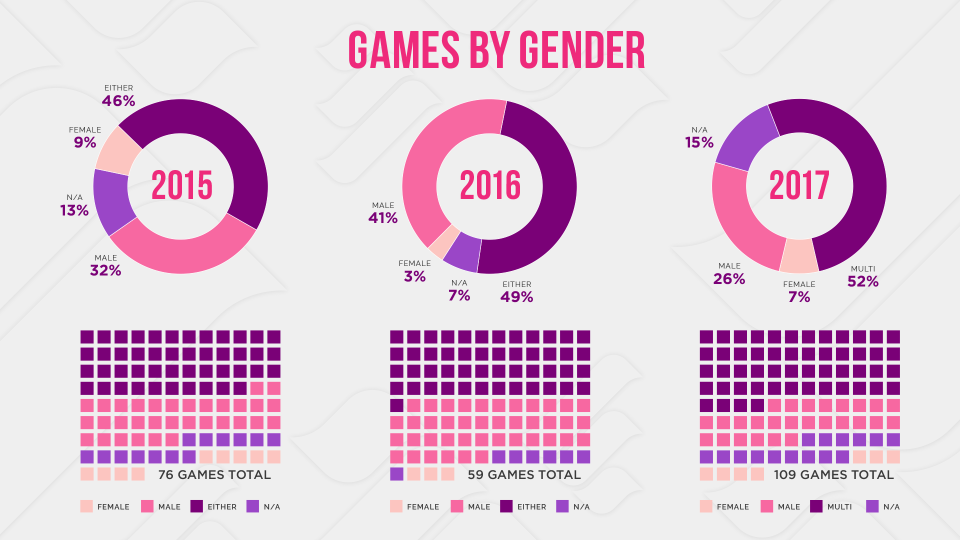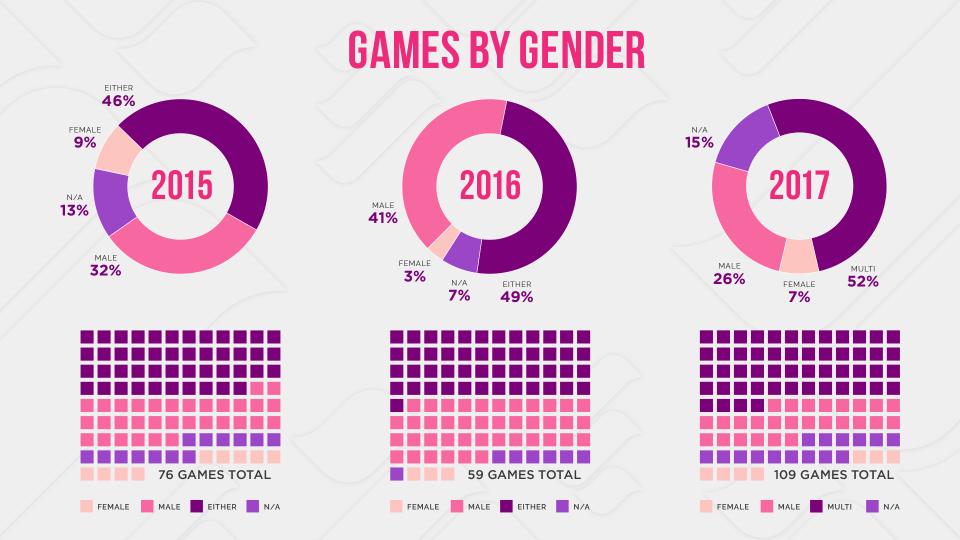The evolution of women in video games continues at E3 2017
Feminist Frequency's Anita Sarkeesian and Carolyn Petit do the numbers.
Feminist Frequency founder Anita Sarkeesian tries to make it clear that her yearly, gender-focused analysis of the video games announced at E3 isn't founded in malice -- it's a mathematical reality. Even in 2017, video games overwhelmingly feature male protagonists rather than female leads. According to Feminist Frequency, 109 games debuted at E3 this year, and just eight of them (or 7 percent) star female characters, compared with 29 titles (26 percent) featuring male protagonists. Fifty-two percent of newly announced games utilize a system that lets players select specific characters or genders. On their own, these statistics aren't bad or good; they're simply facts.
"We're not trying to be bummers," Sarkeesian said on the Engadget stage at E3. "But it's like, let's look at the actual numbers so we can actually improve for real."
Sarkeesian and Feminist Frequency's managing editor, Carolyn Petit, have been compiling data on the gender of protagonists in video games announced at E3 since 2015, which plenty of people in the industry dubbed the "year of the woman." Sarkeesian and Petit weren't convinced, so they decided to compile and break down the actual number of games announced at E3 that starred female characters.
"There was this sense in the air of, things are changing and there are more games starring women announced, et cetera, et cetera," Sarkeesian said. "But we were like, OK, but we might be getting ahead of ourselves. So we just started counting. And we came up with numbers and we decided to track them over the years, which would create a really interesting data set moving forward in terms of judging how the industry presents itself and how it's changing over time."
As it turned out, at E3 2015, just 9 percent of new games starred women, while 32 percent had men in the leading role. In 2016, the gap grew -- only 3 percent of newly revealed games featured female protagonists, while 41 percent starred men. This escalation made Sarkeesian and Petit nervous about the figures this year, but things are actually closer to 2015 -- the so-called year of the woman -- than 2016.
"The important thing, I think, is that we don't rest on our laurels," Petit said. "We don't say, 'Oh, hey, equality achieved!' or whatever when, actually, the reality is that there's still a lot of work to be done. These trends are encouraging and great, but they're not, hopefully, the end of anything."
Follow all the latest news from E3 2017 here!





